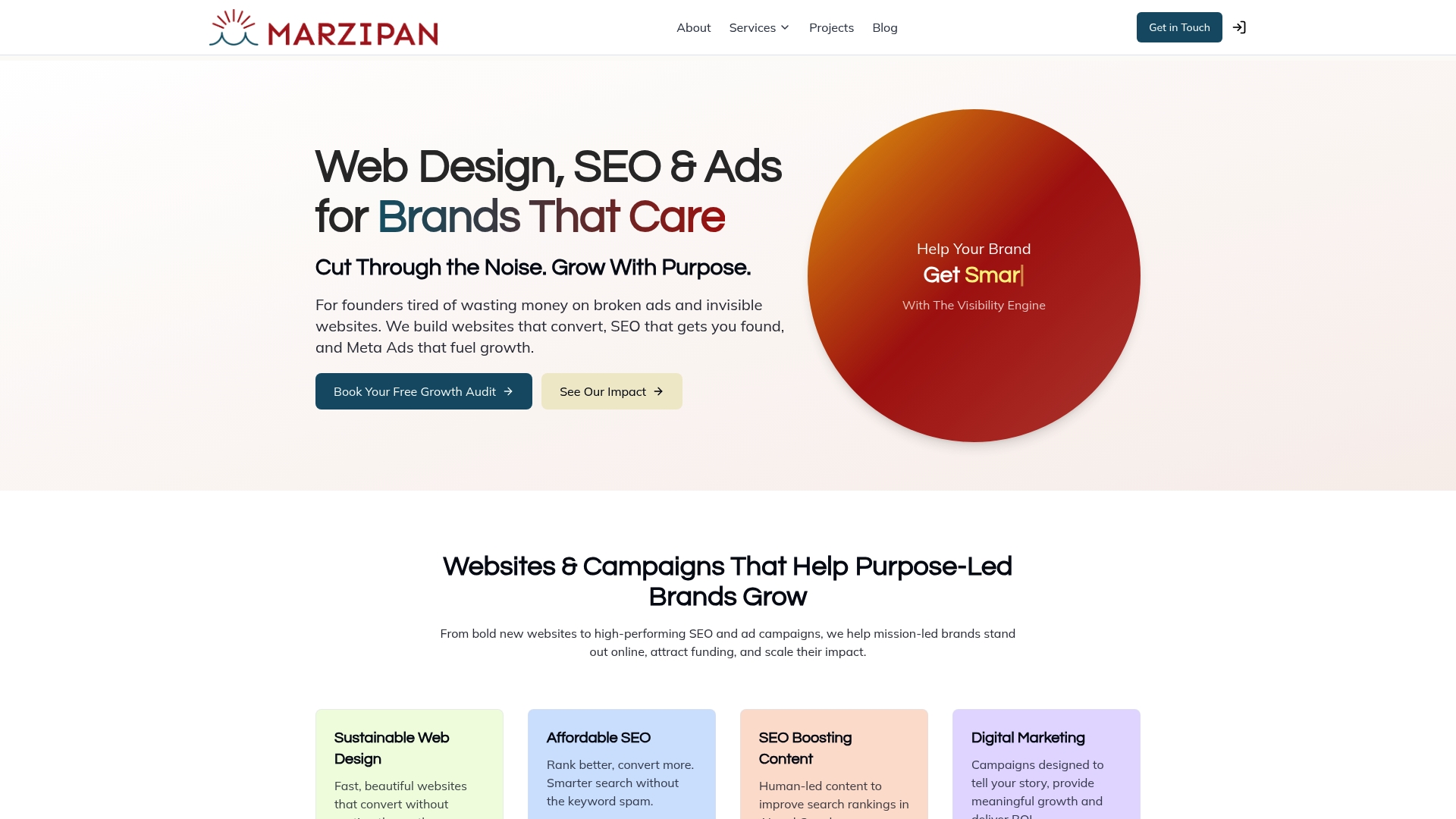7 Essential Steps for a Sustainable Web Design Checklist
Web design might look like a clean, green activity, all clicks and code with no tangible consequences. Yet the digital world consumes an astonishing amount of energy, and websites are responsible for an estimated 2-4% of global carbon emissions. Most people are shocked to learn that this puts the environmental impact of the internet in the same league as the aviation industry. The real surprise is that simply tweaking simple web design choices can make a dramatic difference to both carbon footprint and user experience.
Table of Contents
- Understand The Impact Of Web Design On The Environment
- Choose An Eco-Friendly Hosting Provider
- Optimize Images And Videos For Lower Energy Use
- Implement Minimalist Design Principles
- Use Sustainable Development Practices
- Make Your Website Accessible And Inclusive
- Regularly Review And Update For Sustainability
Quick Summary
| Takeaway | Explanation |
|---|---|
| Adopt sustainable web design practices | Implement design strategies to reduce carbon emissions from websites, focusing on energy-efficient techniques. |
| Choose eco-friendly hosting providers | Select hosting services that utilise renewable energy sources and have strong carbon offset programmes to minimise environmental impact. |
| Optimise images and videos effectively | Use compression techniques and appropriate formats to reduce media file sizes, lowering energy consumption significantly. |
| Implement minimalist design principles | Simplifying website design reduces complexity and processing power required, thus lessening the site’s carbon footprint. |
| Regularly review and update for sustainability | Conduct performance audits and tech updates frequently to ensure ongoing efficiency and eco-friendliness of the website. |
1: Understand the Impact of Web Design on the Environment
Web design might seem like a purely digital endeavour, but its environmental footprint is surprisingly substantial. Every website consumes energy through data centres, network infrastructure, and end-user devices, contributing to global carbon emissions. Sustainable web design represents a critical approach to minimising this digital environmental impact.
Digital infrastructure currently generates approximately 2-4% of global carbon emissions – a figure comparable to the aviation industry. This staggering statistic highlights the urgent need for environmentally conscious web development practices. When websites are inefficiently designed, they require more computational power, leading to increased energy consumption.
Key environmental considerations in web design include:
-
Data Transfer Volume: Larger file sizes and complex scripts demand more energy
-
Server Infrastructure: Inefficient hosting and data centre practices increase carbon footprint
-
User Device Energy Consumption: Poorly optimised websites drain battery life and require more processing power
According to The Green Web Foundation, transitioning to sustainable web design can significantly reduce a website’s carbon emissions. This involves strategic choices in design, coding, and hosting that prioritise energy efficiency.
Practical strategies include minimising data transfer, using compressed images, implementing efficient coding practices, and selecting green hosting providers. By understanding the environmental impact of web design, developers and businesses can make informed decisions that contribute to a more sustainable digital ecosystem.
2: Choose an Eco-Friendly Hosting Provider
Selecting the right hosting provider is a critical step in developing a sustainable web design strategy. Web hosting significantly impacts digital carbon emissions, with data centres consuming substantial electricity and generating considerable environmental strain.
Website carbon measurement tools reveal that different hosting providers have dramatically varied carbon footprints. Green hosting providers prioritise renewable energy sources and implement energy-efficient infrastructure to minimise environmental impact.
When evaluating eco-friendly hosting providers, consider these essential criteria:
-
Renewable Energy Commitment: Providers using wind, solar, or hydroelectric power
-
Carbon Offsetting Programmes: Active investments in environmental restoration projects
-
Energy Efficiency Ratings: Server infrastructure optimisation and cooling system efficiency
According to The Green Web Foundation, companies can reduce their digital carbon footprint by up to 30% through strategic hosting selection. This involves assessing potential providers based on their environmental credentials and technological infrastructure.
Key strategies for identifying sustainable hosting include researching providers’ energy sources, examining their carbon offset programmes, and understanding their technological approaches to energy conservation. Some providers publish comprehensive sustainability reports detailing their environmental initiatives, offering transparent insights into their ecological commitments.
Beyond environmental considerations, eco-friendly hosting often correlates with superior technical performance. Efficiently designed data centres typically provide faster loading times, improved website responsiveness, and more reliable infrastructure. By prioritising green hosting, businesses can simultaneously reduce their environmental impact and enhance their digital performance.
3: Optimize Images and Videos for Lower Energy Use
Media files represent a substantial portion of website data transfer, directly influencing energy consumption and carbon emissions. Unoptimised images and videos can dramatically increase a website’s digital carbon footprint, requiring more computational resources for loading and rendering.
Sustainable web design prioritises efficient media management through strategic optimization techniques. By reducing file sizes and implementing intelligent loading strategies, websites can significantly decrease their environmental impact.
Critical strategies for media optimization include:
-
Compressed Image Formats: Using WebP or AVIF instead of traditional JPEG and PNG
-
Responsive Image Techniques: Serving appropriately sized images for different device screens
-
Lazy Loading Implementation: Loading media only when necessary
According to HTTP Archive, images constitute approximately 45% of total webpage weight. This substantial digital mass translates into increased energy consumption across servers, networks, and user devices.
Professional optimization involves multiple technical approaches. Compression algorithms can reduce image file sizes by up to 70% without perceptible quality loss. Modern image formats like WebP offer superior compression compared to traditional formats, enabling websites to maintain visual quality while minimising data transfer.
Additionally, implementing adaptive media strategies ensures that users receive appropriately sized media for their specific device. This approach reduces unnecessary data transfer, conserves bandwidth, and ultimately contributes to lower energy consumption. By treating media optimization as an integral component of sustainable web design, developers can create visually compelling websites with minimal environmental impact.
4: Implement Minimalist Design Principles
Minimalist design transcends aesthetic preferences, emerging as a powerful strategy for reducing digital environmental impact. By simplifying website architecture and reducing computational complexity, designers can create more energy-efficient digital experiences.
Sustainable web design recognises that every unnecessary design element contributes to increased energy consumption. Complex graphical interfaces, redundant scripts, and intricate animations demand more processing power, directly translating to higher carbon emissions.
Key minimalist design principles for sustainable websites include:
-
Simplified Colour Palettes: Using fewer colours reduces rendering complexity
-
Clean Typography: Selecting efficient font formats and minimising font variations
-
Reduced Interactive Elements: Eliminating unnecessary animations and dynamic content
According to Google’s Web Fundamentals, simplified designs can reduce page load times by up to 40%, simultaneously improving user experience and decreasing energy consumption.
Minimalist approaches extend beyond visual design into functional website architecture. By eliminating superfluous code, reducing script dependencies, and streamlining user journeys, websites can operate more efficiently. This approach requires thoughtful consideration of each design element, questioning whether it genuinely enhances user experience or merely adds visual complexity.
Furthermore, minimalist design aligns with broader user preferences for fast, intuitive digital interfaces. Modern web users value clarity and speed, making sustainable design principles not just environmentally responsible, but also strategically smart for engaging online audiences.
5: Use Sustainable Development Practices
Sustainable web development goes far beyond aesthetic considerations, encompassing strategic coding practices that minimise digital carbon emissions. Developers play a crucial role in creating environmentally responsible digital infrastructure through intelligent technological choices.
Sustainable web design requires a holistic approach to writing efficient, lean code that reduces computational overhead and energy consumption. By implementing targeted development strategies, web professionals can significantly decrease a website’s environmental impact.
Core sustainable development practices include:
-
Code Efficiency: Writing clean, streamlined scripts with minimal redundancy
-
Caching Strategies: Implementing intelligent data storage mechanisms
-
Modular Programming: Developing reusable, lightweight code components
According to W3C Web Performance Working Group, optimised code can reduce server processing requirements by up to 35%, directly translating to lower energy consumption across digital infrastructure.
Programming languages and frameworks also influence sustainability. Some languages require substantially less computational power to execute, meaning developers can make environmentally conscious choices during technology selection. Static site generators, for instance, produce lightweight websites that consume dramatically less energy compared to complex dynamic platforms.
Additionally, continuous performance monitoring and regular code audits help maintain a website’s efficiency. By consistently reviewing and refactoring code, developers can eliminate unnecessary processes, reduce data transfer volumes, and create more environmentally friendly digital experiences. Sustainable development is not a one-time effort but an ongoing commitment to technological responsibility.
6: Make Your Website Accessible and Inclusive
Accessibility and inclusivity are fundamental principles of sustainable web design, extending beyond environmental considerations to embrace digital equality. By creating websites that accommodate diverse user needs, designers contribute to a more equitable online ecosystem.
Sustainability articles highlight the interconnected nature of environmental and social responsibility in digital spaces. Inclusive design reduces unnecessary computational complexity while ensuring broader user engagement.
Key accessibility principles include:
-
Alternative Text for Images: Enabling screen reader comprehension
-
Keyboard Navigation: Supporting users with motor disabilities
-
High Colour Contrast: Improving readability for visually impaired users
According to Web Accessibility Initiative, approximately 15% of the global population experiences some form of disability, underscoring the critical importance of inclusive digital design.
Accessible websites typically require less complex code and more streamlined design architectures. This alignment with sustainable web design principles means that creating inclusive experiences often naturally reduces digital carbon footprints. Efficient, clean code that supports assistive technologies simultaneously enhances website performance and reduces energy consumption.
Moreover, inclusive design promotes broader digital participation, ensuring that technological advancements benefit all members of society. By prioritising accessibility, web designers demonstrate a commitment to social equity and environmental consciousness, transforming websites into platforms that are both technologically efficient and socially responsible.
7: Regularly Review and Update for Sustainability
Sustainable web design is not a static achievement but a continuous evolutionary process. Regular reviews and strategic updates are essential for maintaining an environmentally responsible digital presence that adapts to emerging technologies and efficiency standards.
Digital marketing resources provide valuable insights into tracking and improving website sustainability performance over time. Periodic assessments enable organisations to identify and address potential inefficiencies proactively.
Key sustainability review strategies include:
-
Performance Audits: Quarterly comprehensive website efficiency assessments
-
Technology Updates: Implementing latest energy efficient coding frameworks
-
Carbon Footprint Tracking: Monitoring website energy consumption metrics
According to The Green Web Foundation, websites that conduct regular sustainability reviews can reduce their carbon emissions by up to 25% through targeted technological interventions.
Technological evolution moves rapidly, and sustainable web design demands ongoing education and adaptation. Developers must stay informed about emerging green technologies, efficient coding practices, and innovative approaches to reducing digital environmental impact. This involves continuously learning about new optimization techniques, understanding evolving web standards, and being willing to refactor existing website architectures.
Moreover, sustainability reviews should encompass more than technical considerations. They require holistic assessments of user experience, accessibility, and overall digital efficiency. By treating sustainability as a dynamic, iterative process, organisations can create websites that are not only environmentally responsible but also technologically progressive and user centric.
Below is a comprehensive table summarising the essential steps and key considerations for implementing sustainable web design as discussed in the article.
| Step/Principle | Key Actions and Considerations | Primary Benefit(s) |
|---|---|---|
| Understand Environmental Impact | Assess how digital infrastructure, data transfer, and design choices affect carbon emissions. | Informs eco-conscious decision-making for responsible design. |
| Choose Eco-Friendly Hosting Provider | Select hosts using renewable energy, carbon offset schemes, and energy-efficient infrastructure. | Minimises carbon footprint; may improve site performance. |
| Optimise Images and Videos | Compress files, use efficient formats (WebP/AVIF), implement responsive sizing and lazy loading. | Reduces data transfer, saving energy and speeding up loading. |
| Implement Minimalist Design Principles | Reduce unnecessary visual elements, streamline code and user journeys, use efficient fonts and palettes. | Lowers energy use, enhances user experience and speed. |
| Use Sustainable Development Practices | Write clean, efficient code; cache intelligently; use modular programming; choose sustainable frameworks. | Decreases server load and energy requirements sustainably. |
| Make Website Accessible and Inclusive | Ensure alternative text, keyboard navigation, and high colour contrast for all users, including those with disabilities. | Promotes digital equity while aligning with sustainability. |
| Regularly Review and Update for Sustainability | Conduct ongoing performance audits, update technology, and monitor carbon footprint using tracking tools and the latest standards. | Maintains ongoing efficiency and eco-friendliness. |
Transform Your Website into a Sustainability Powerhouse Today
Is your current website weighing down your mission-led business with hidden carbon emissions and slow performance? The article you just explored sheds light on challenges such as high digital energy use, inefficient code, and media-heavy designs that can chip away at both our planet and your user experience. If optimising for sustainable web design, accessibility, and ongoing digital responsibility feels overwhelming, you are not alone. Many eco-conscious leaders struggle to find experts who genuinely understand these pain points while delivering results.

Now is the moment to join forces with a creative team that turns sustainability into a competitive advantage. At Marzipan, we develop sustainable websites tailored for mission-focused organisations. We apply best practices in sustainable web design, assist you in measuring and reducing your website’s carbon footprint, and continually update your digital approach for ongoing efficiency. Do not let an outdated or energy-hungry website undermine the values your brand represents. Visit our main site and take the first bold step towards a cleaner, faster, and more impactful online presence.
Frequently Asked Questions
What is sustainable web design?
Sustainable web design focuses on minimizing the environmental impact of websites through energy-efficient practices, including optimising performance and reducing carbon emissions.
How can I choose an eco-friendly hosting provider?
Look for hosting providers that utilise renewable energy sources, have carbon offset programmes, and demonstrate energy-efficient infrastructure. Research their sustainability credentials and performance ratings.
What are some effective strategies for optimising images and videos on my website?
Use compressed image formats like WebP, implement responsive image techniques for different devices, and incorporate lazy loading to decrease file sizes and energy consumption.
Why is minimalist design important for sustainable web design?
Minimalist design simplifies website architecture, reduces computational complexity, and decreases energy consumption, resulting in faster loading times and a smaller carbon footprint.







